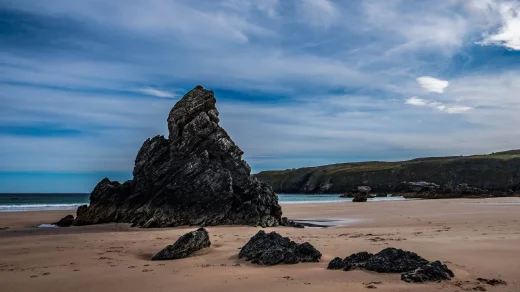Flora and Fauna in Scotland.
Scotland’s wildlife is typical of the north-west of Europe, although several of the larger mammals such as the lynx, brown bear, wolf, elk and walrus were hunted to extinction in historic times. There are important populations of seals and internationally significant nesting grounds for a variety of seabirds such as gannets. The golden eagle is something of a national icon.
On the high mountain tops, species including ptarmigan, mountain hare and stoat can be seen in their white colour phase during winter months. Remnants of the native Scots pine forest exist and within these areas the Scottish crossbill, the UK’s only endemic bird species and vertebrate, can be found alongside capercaillie, Scottish wildcat, red squirrel and pine marten. Various animals have been re-introduced, including the white-tailed eagle in 1975, the red kite in the 1980s, and there have been experimental projects involving the beaver and wild boar. Today, much of the remaining native Caledonian Forest lies within the Cairngorms National Park and remnants of the forest remain at 84 locations across Scotland. On the west coast, remnants of ancient Celtic Rainforest still remain, particularly on the Taynish peninsula in Argyll, these forests are particularly rare due to high rates of deforestation throughout Scottish history.
The flora of the country is varied incorporating both deciduous and coniferous woodland as well as moorland and tundra species. Large-scale commercial tree planting and management of upland moorland habitat for the grazing of sheep and field sport activities like deer stalking and driven grouse shooting impacts the distribution of indigenous plants and animals. The UK’s tallest tree is a grand fir planted beside Loch Fyne, Argyll in the 1870s, and the Fortingall Yew may be 5,000 years old and is probably the oldest living thing in Europe. Although the number of native vascular plants is low by world standards, Scotland’s substantial bryophyte flora is of global importance.



